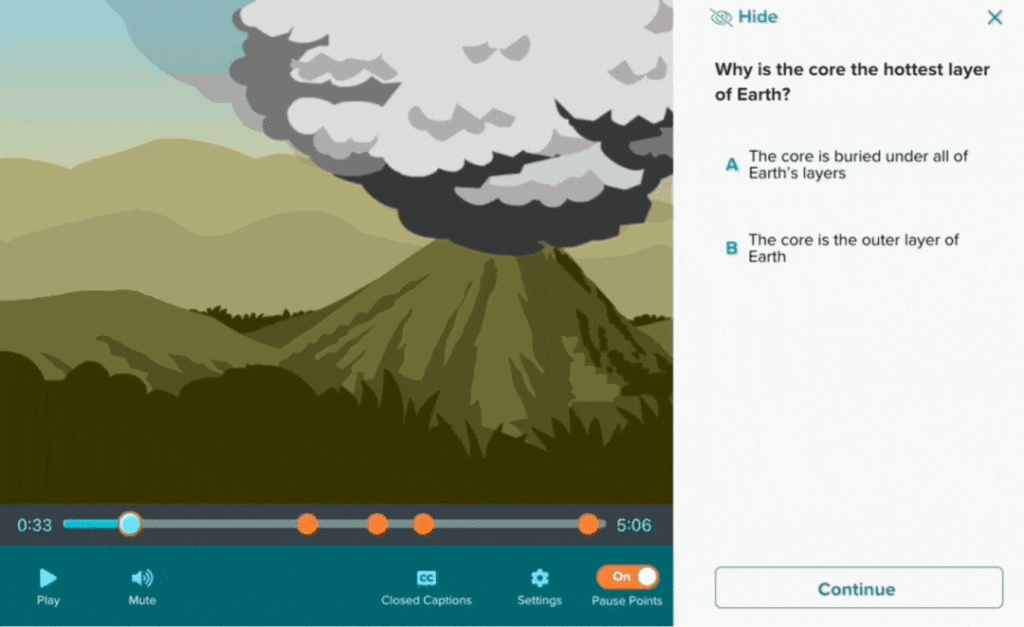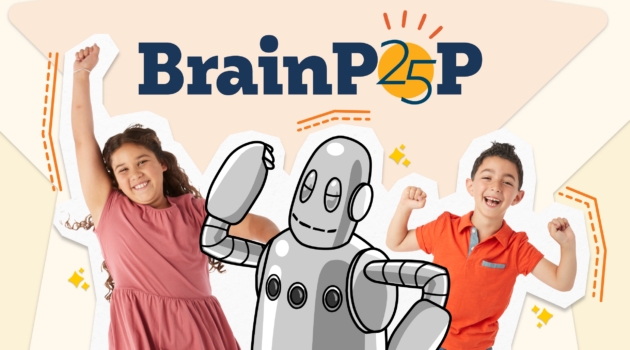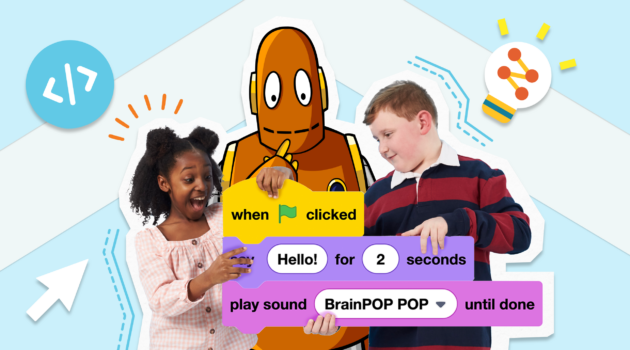Learning Activities
It’s Okay to Pause: 5 Ways Pause Points Maximize Learning Impact

Gone are the days of rolling out a clunky TV set, pressing play on an educational movie, and letting students zone out for the next half an hour. In the last decades, research in the cognitive sciences has proven that multimedia learning is most effective when it’s an engaging, active learning experience intentionally optimized to avoid cognitive overload.
And, as every educator knows, creating active learning for students is no small feat. Behind each engaged classroom is at least one hardworking teacher.
BrainPOP is here to lessen that cognitive load for students—as well as the lesson load for teachers, because our movies are more than just static movies — they also include features like Pause Points: grade-leveled, auto-graded questions and prompts that encourage students to reflect on and assess their own understanding of the background knowledge presented in the movie. (Learn more about BrainPOP’s other grade-leveled, auto-graded features here!)
We chatted with Dr. Barbara Hubert, senior director of learning design at BrainPOP, to learn more about what goes into each BrainPOP Pause Point.
When building any activity on BrainPOP, she and her team constantly ask themselves questions like: “How do people interpret and process information? How do they eventually develop mastery? What does cognitive research tell us about memory? Attention? Development? Individual differences?” All of this means that teachers can focus on worrying about what matters most: connecting with their students.
Discover how Pause Points help transform background-building movies from passive lounging to active learning—with just a few clicks.

5 Ways Pausing to Reflect and Assess Maximizes Learning and Engagement
1. It helps students actively engage in their learning
Research tells us that when students actively process information—such as through answering questions or solving problems—it enhances their learning outcomes. Pause Points are built to cultivate this active processing: they prevent the zoned-out-student by stopping at key moments and prompting them to interact with grade-level content. This accords with educational psychologist Richard Mayers’ influential Cognitive Theory of Multimedia Learning—meaning it helps students learn in the way they learn best.
2. It gives students immediate feedback
Getting timely feedback is essential for effective learning. By getting the right answer right away, students can quickly identify their own misconceptions and course-correct their learning—meaning they only expend their mental energy on making sense of what matters (or, in the parlance of learning science: it helps reduce extraneous load). Dr. Hubert and her team place Pause Points at the exact moments—and on the exact topics—in which students might have a misconception, helping them make adjustments and take charge of their own learning.
3. It promotes deep learning
Reflection and application are critical for deep learning. For example, when students come up with explanations for why a given fact is true (or, in learning science language: when students engage in “elaborative interrogation”), it’s been shown that they better understand and remember the fact. In the case of Pause Points, students are asked to pause and reflect on the grade-level concept just explained in the movie. They’ll need to use their elaborative interrogation skills to explain it, or apply what they learned using real-world scenarios—helping make that grade-level content “stick.”
4. It allows for a differentiated learning experience
Tailoring instruction to meet individual needs is an educational best practice that most teachers already know—and there’s plenty of research to back it up. Pause Points, along with the other autograded activities in a BrainPOP topic, allow for that by offering grade-banded entry points with questions that get progressively more challenging in each set. Based on learner need, teachers can assign students question sets that are above, below, or at grade level, and students can answer questions by speaking, drawing, or writing—whatever works best for them.
5. It helps students pay attention and retain information
It’s difficult to overstate the importance of managing students’ cognitive load. Research in cognitive load theory and multimedia learning has shown that breaking instructional material into manageable chunks can help reduce the dreaded cognitive overload and enhance learning outcomes. At the same time, distributing learning in regular intervals improves student retention and recall of information. Pause Points address both of these learning science principles: they are spaced throughout the movie (making for those ideal short, focused instructional segments that are more effective than longer, uninterrupted movies) and ask students to engage in the movie in those ideal, regular intervals. In short, they help students pay attention and remember what they learned.
How BrainPOP Pause Points Help in the Classroom
So, how does all of the above translate to the classroom? Dr. Hubert sums it up best. “We not only focus on what students need to learn, driven by state learning standards,” she says, “But how individuals learn—or the science of learning.” Pause Points use learning science to help students actively engage in their learning, learn deeply, retain information, and course-correct their misconceptions based on immediate feedback. In other words: they help students learn in the way they learn best—thereby maximizing learning impact while minimizing teacher stress.
What’s Next?
If you’re thinking: “Wow, that’s a lot of thought that goes into a seemingly small facet of the BrainPOP movie”— you’re right! It’s also the level of care that goes into each and every small detail of the BrainPOP learning experience. Want to learn more BrainPOP strategies that can benefit your students? Get in touch with our Professional Learning Services team.
AnnaLiese Burich is a product marketing manager at BrainPOP with a history of Edtech writing experience. She holds an MA in Magazine Journalism and an MA in English Literature.






